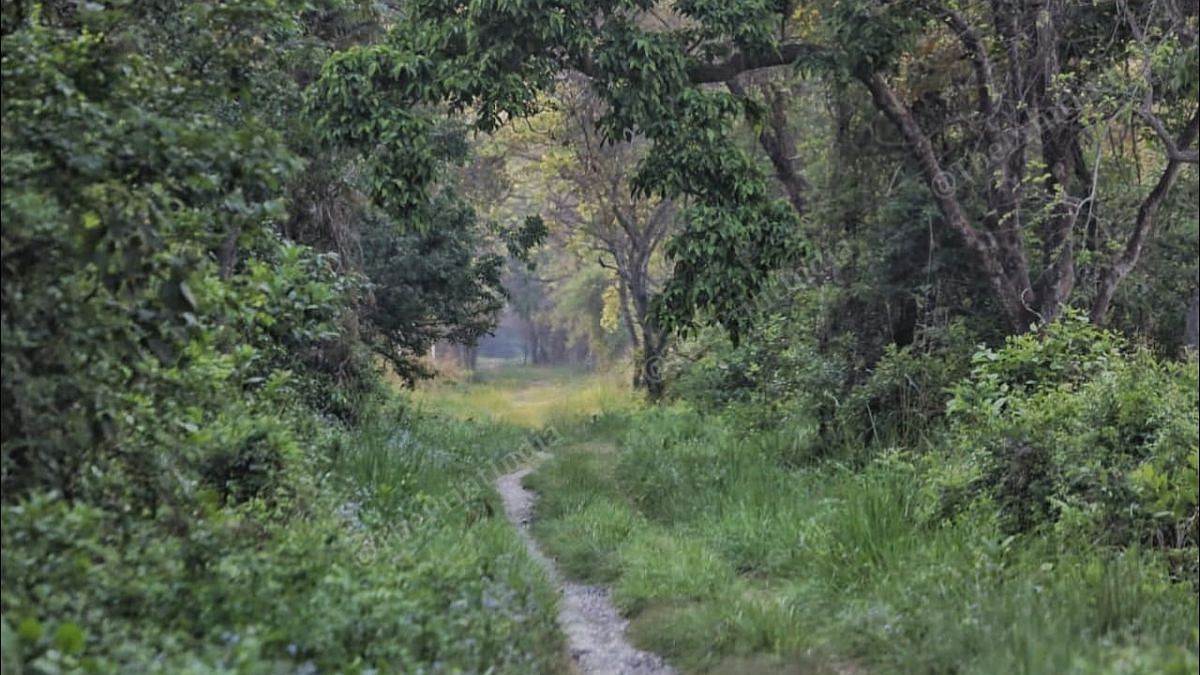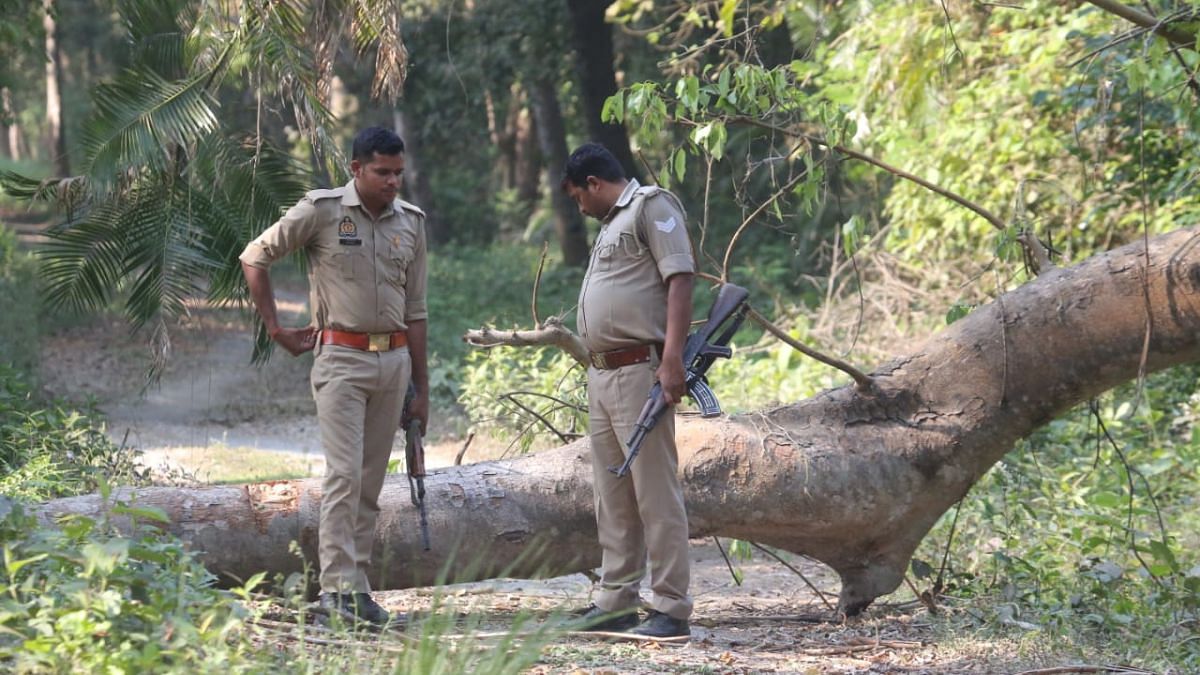Bahraich: When I left Delhi last week to cover the upcoming Lok Sabha elections in Uttar Pradesh, I was prepared for politicians, and for experiencing politics from the ground. What I wasn’t prepared for was a trip through crocodile-infested waters and rides through the core areas of a jungle.
We were in Lucknow when ThePrint’s national photo editor, Praveen Jain, and I heard about villages on the India-Nepal border that could only be accessed through boats and routes that go through the Katarniaghat jungle.
We heard that some of these villages had never even had an Indian mobile network. We were certain that we did not want to make these villages wait on the sidelines anymore, and so we took a detour that lasted two days.
As journalists, we wanted to see for ourselves, unaware of how this was going to be one of the most challenging assignments for both of us.
We left for Bahraich at 10 am on 10 April, and as soon as we approached the Katarniaghat Wildlife Sanctuary, we lost our mobile network.
Our journey had begun. We made our way to a small clearing at the banks of the Girwa River, where we were told we’d have to wait for a boat that would take us across.
Both Praveen and I hopped onto this boat, laden with our shooting equipment, alongside residents of these villages as well as goods that were being taken across.
Mind you, neither of us knows how to swim. In any case, we were certain that swimming wouldn’t save us from the crocodiles that inhabit the river if the boat did capsize.
We were both holding our breath but at the same time taking in our surroundings. What seemed like a narrow stretch soon opened up to vast waters of the river glistening in the afternoon sun.
We heaved a sigh of relief once we reached the shore, only to be told that Bharthapur was another 6km drive — this time through the dense Katarniaghat jungle, with a mosaic of sal and teak forests, lush grasslands, swamps and wetlands, home to gharials, tigers, rhinos, and elephants.
We asked around and sought help from the Sashastra Seema Bal camp at the shore of the Girwa River because the terrain felt extremely treacherous and alien to both of us.
The path through the jungle was barely a clearing amid the beautiful greenery all around. We were racing against time because we had to get back before sunset, while the beauty of the forest left us enamoured.
When we finally made it to Bharthapur, what we saw was a patchwork of thatched roofs, with a primary school being the only pucca construction in the village. The villagers, who don’t have outside visitors very often, were initially curious about seeing us but began opening up as soon as we mentioned that we were journalists.
Also Read: No Mandir or Hindutva, BJP’s Maneka Gandhi banks on work for second term from Sultanpur
‘Tormented by sorrows’
The entire village gathered around us to show us their way of life.

Octogenarian Kalawati had tears in her eyes. In her local language, she told us how the villagers were “tormented by sorrows”.
They told us how they don’t have access to the most basic facilities like healthcare, education and electricity. The houses in the village function on small solar panels set up atop their huts.
They told us how the village has a school but the teachers often don’t end up coming if they encounter animals in the jungle. They also narrated incidents when wild animals killed their brethren.
They told us how the politicians don’t visit their village and how they barely ever receive any help from them. They told us how the sick die on the way to the hospital, which is over 50 km away — again through the jungle and water route.
It was clear that their stories aren’t for the faint-hearted, and that their pain doesn’t have too many listeners.
In their pain, we lost track of time before we realised that it was already sunset. Both of us rushed towards the jungle again — taking along stories of Kalawati and her village folk.
The journey back through the jungle was even tougher in the dark, every rustling of leaves making us quiver. On the river, the villager handling the boat was expertly using just a flashlight to navigate the waters through the pitch black of the night.
‘No power, no vote’
Both Praveen and I could barely sleep that night. With our phones still catching a weak network, we were left alone with our thoughts — our minds still in Bharthapur.
The next day, our mission was to go to four more villages on the India-Nepal border. We had heard stories about how these villages get no mobile network at all, ever, and that the villagers had warned that they would boycott elections if the authorities did not act now.
The route to these villages also goes through the Katarniaghat jungle. When we were a few hundred metres away from these villages, we realised that the route was blocked by a huge tree trunk. The jungle was giving us a glimpse into the difficulties that these villagers face every day.

We were also told that now somebody would have to manually ask the authorities to clear the pathway because the message cannot be relayed on call or text.
Inside these villages, every wall was painted with slogans like “No tower, No power” and “No network, No vote”.
While these villages did not have difficult terrain like that in Bharthapur, they were as disconnected from the outside world — struggling to access the most basic of resources due to a lack of an Indian mobile network tower.
A villager even told us that if, at that moment, something happened to Praveen or me, they weren’t sure if they’d be able to get us help in time. Imagine our surprise when we learnt that they get better signals from Nepalese mobile networks than those in India, and so several of them use Nepalese SIMs instead!
These villagers also told us stories about the disconnect they feel with the rest of the country.
They were hungry for development and connection with the outside world, hungry to watch their children progress and grow in life.
Swiftly responding to a very basic demand, the authorities had fixed a BSNL tower near the villages, leading to a slight reprieve, but the villagers said that their demand for private networks would continue.
Since these villages were so close to the border, we also visited the India-Nepal border near the Katarniaghat jungle. The learning was that the borders really get blurry when you see them up close.
Our two-day trip ended near the Ghagra barrage, where we ate ‘ghaatis’ — a version of the traditional baati. While we were savouring the sattu balls, a monkey leapt at my plate and stole a ghaati when I was distractedly scrolling through my phone, which finally had a functioning network after two days.
(Edited by Richa Mishra)
Also Read: Praising Modi, sharing stage with local BJP leaders, 2024 ushered in a ‘softened’ Varun Gandhi
